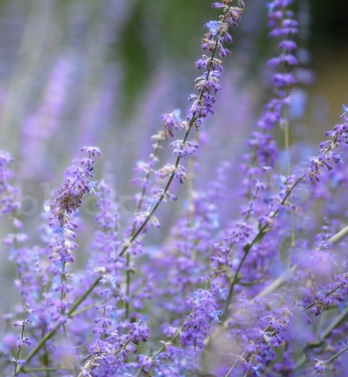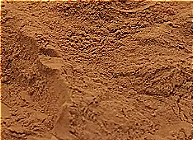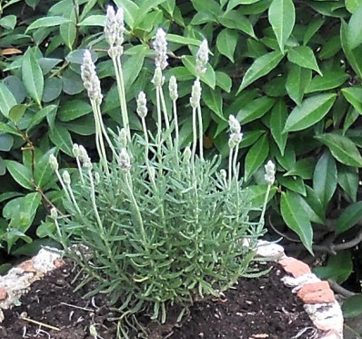| "Descrizione" by AColumn (9336 pt) | 2023-Jun-16 12:08 |
Review Consensus: 10 Rating: 10 Number of users: 1
| Evaluation | N. Experts | Evaluation | N. Experts |
|---|---|---|---|
| 1 | 6 | ||
| 2 | 7 | ||
| 3 | 8 | ||
| 4 | 9 | ||
| 5 | 10 |
Lavandula angustifolia flower extract is an extract obtained from the flowers of the aromatic perennial shrub Lavandula angustifolia Mill. the narrow-leaved lavender belonging to the Lamiaceae family. Extraction is by hydro-alcoholic method with immersion in 50% ethanol followed by maceration, centrifugation and ultrasound-assisted extraction. High-power ultrasound corresponding to frequencies of 20 or 25 kHz seems to offer a good method of extraction and can be applied using two types of devices, the ultrasonic bath or the probe ultrasound equipment. The probe system is more powerful due to the intensity of the ultrasound delivered through a smaller surface area than the ultrasonic bath.

The extraction process produces a variety of phenolic compounds and flavonoids. The most abundant compound is 2,5-dihydroxybenzoic acid, which accounts for more than 40 per cent of the polyphenol fraction obtained by ultrasound-assisted extraction. Other phenolic compounds were also present, such as caffeic, chlorogenic and p-coumaric acids.
The overall amount of flavonoids is much higher in the ultrasound-assisted extraction samples than in the distillation waste. The presence of flavonoid glycosides is highly variable within the subgenus Lavandula, resulting in flavonoid profiles that may differ between species groups.
Industrially it appears as a brown powder

What it is used for and where
The extracted compounds have potential applications in various industries. Gentisic acid, which is particularly abundant, is described as an analgesic, anti-inflammatory, anti-rheumatic, anti-arthritic, cytostatic and fibroblast growth factor inhibitor. It also appears to inhibit the oxidation of low-density lipoproteins in human plasma. Furthermore, gentisic acid-rich extracts could be exploited as a cosmetic ingredient for skin-lightening applications. The relative abundance of quercetin derivatives could find application in skin care formulations for their anti-inflammatory properties.
Medical
Lavender flowers and leaves are used in the form of extracts in phytotherapy to relieve anxiety, insomnia, and depression, while lavender's anti-inflammatory activity is due to its significant content of polyphenols, flavonoids, and oxygenated monoterpenes such as linalool (1).
This study considers that, in light of literature reports as an effective medical plant in the treatment of inflammation, depression and stress, due to its sedative and anxiolytic action, thrombotic and antimicrobial properties, the results demonstrate DNA protective activity (2).
Cosmetics
Lavender extract and oil are commonly used in detergents, industrial and domestic cleaning products, and in hygiene due to the presence of higher levels of camphor. Although lavender essential oil is more widely used in cosmetics, the flower extract has very similar characteristics and is useful as a preservative, antibacterial and skin regenerator. Antibacterial substances of natural origin help control the growth of microorganisms in the skin microbiota and accelerate the development and regeneration of skin cells (3).

Cleansing agent. Ingredient that cleanses skin without exploiting the surface-active properties that produce a lowering of the surface tension of the stratum corneum.
Deodorant agent. When substances that give off an unpleasant odour are included in cosmetic formulations (typical examples are methyl mercaptan and hydrogen sulphide derived from garlic), deodorants attenuate or eliminate the unpleasant exhalation. It helps counteract the formation of bad odours on body surfaces.
Fragrance. It plays a decisive and important role in the formulation of cosmetic products as it provides the possibility of enhancing, masking or adding fragrance to the final product, increasing its marketability. It is able to create a perceptible pleasant odour, masking a bad smell. The consumer always expects to find a pleasant or distinctive scent in a cosmetic product.
Refreshing. This ingredient is included in cosmetic products to provide a refreshing or toning sensation to the skin and can also help relieve irritation or redness.
Tonic. This product is used to treat the hair when the scalp is clean or after shampooing. It stimulates hair growth, revitalises the scalp for healthy hair growth and reduces hair loss. It provides a feeling of well-being on skin and hair.
Other uses
Used as a tea to aid sleep
For more information:
Lavandula angustifolia studies
Typical commercial product characteristics Dried Lavender Flower
| Appearance | Brown powder |
| Loss on drying | <5.0% |
| Residue on Ignition | <5.0% |
| Heavy metals | <10.0ppm |
| As | <2.0ppm |
| Pb | <2.0ppm |
| Hg | 0.1ppm |
| Total plate | <10,000cfu/g |
| Yeast & Mold | <1000cfu/g |
| Aflatoxins | 0.2ppb |
| Storage | Keep away from strong,direct light. Clean,cool,dry area |
| Shelf Life | 24 months |
CAS 90063-37-9
EC number 289-995-2
References________________________________________________________________________
(1) Hajhashemi V, Ghannadi A, Sharif B. Anti-inflammatory and analgesic properties of the leaf extracts and essential oil of Lavandula angustifolia Mill. J Ethnopharmacol. 2003 Nov;89(1):67-71. doi: 10.1016/s0378-8741(03)00234-4.
(2) Kozics K, Srancikova A, Sedlackova E, Horvathova E, Melusova M, Melus V, Krajcovicova Z, Sramkova M. Antioxidant potential of essential oil from Lavandula angustifolia in in vitro and ex vivo cultured liver cells. Neoplasma. 2017;64(4):485-493. doi: 10.4149/neo_2017_401.
(3) Brud, W., & Konopacka-Brud, I. (1998). Essential oils as active substances in cosmetics. Herb. Messages, 7(8), 8-10.
| Evaluate |

